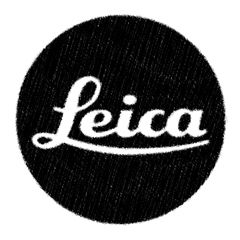
Chapter 10: Never trust a histogram.
The Leica Q2 Monochrom journal.
We commonly rely on histograms for exposing our DNG files, but they’re often incorrect. The histogram in the Leica Q2 Monochrom (and most cameras for that matter) is taken off the JPG preview image. You’d think it’s a conservative indicator of the eight-stop light range of a JPG, but it’s often wrong. Some DNG files can look dark because they don’t make full use of the light range of the sensor. Other images may have highlights burned into pure white when the histogram indicates you’re well within confines. This entry will help you get more accurate exposures by forgetting the histogram.
Why the histogram may tell you you’re overexposing when you’re not.
Even when shooting DNG files, the histogram is based on the eight-stop confines of the JPG preview. By contrast, the sensor in the Q2M has a dynamic range of 14.5 stops. So the histogram can show you that you’re overexposed when you’re not. And in Lightroom you may find that there are still plenty of highlights available, even though you’re unnecessarily burning shadows into pure black.
Why the histogram may tell you you’re correctly exposing when you’re not.
This is likely to be more of a problem for those that subscribe to Expose-to-the-Right. This technique lets you optimize exposure by opening up the aperture or decreasing shutter speed all the way up to (but not touching) the right side of the histogram. Then in Lightroom you reduce the Exposure slider to restore the tones. The net result is more latitude in shadows and less noise. The problem is that the histogram may tell you you’re not losing highlights into pure white when in fact you are. I use Highlight-Weighted metering which should protect from this, but when I tried opening up a few extra stops, while still within parameters of the histogram, I was burning highlights into pure white. ETTR advocates tell you that you can comfortably add 1½ stops of exposure, but I’ve experienced lost highlights at 1½ stops, even though the histogram said the exposure was fine.
So what’s the solution?
Trust the blinkies, Luke.
At least on the Q2M, the clipping blinkies are a better indicator for overexposure than the histogram. I often find that the histogram is showing the light range is fine, but the clipping blinkies indicate some burnout. (Lightroom confirms burnout where the blinkies were.) If you’re seeing blinkies when composing, turn the EV Compensation clicker to the left until they go away. Note that if exposure, shutter or ISO are set for auto, as the camera adjusts, the blinkies may go away. That indicates the exposure will be fine and there’s no need for EV compensation.
How to turn on your blinkies.
- Press the Menu button 5 times.
- Choose Capture Assistants.
- Set Clipping to On.
My take.
Early on I relied on the histogram in the Q2M, but have since turned it off. When shooting DNG files, we’re not really interested in making a flawless-looking image like we are a JPG. It doesn’t matter how the DNG looks out of the camera since half the exposure process is being made in our editing software. Our main concern when shooting a DNG is that we’re not burning out highlights, which blinkies can indicate better than the histogram. Blinkies also show you exactly where the burnout is happening. So if there are areas where you have acceptable burnout (like the sun or lights in a scene) you’ll know whether to compensate or not.
Read the next entry: Recovering highlights
Like this series? Consider buying me a coffee below.

Photography Leica Q2 Monochrom